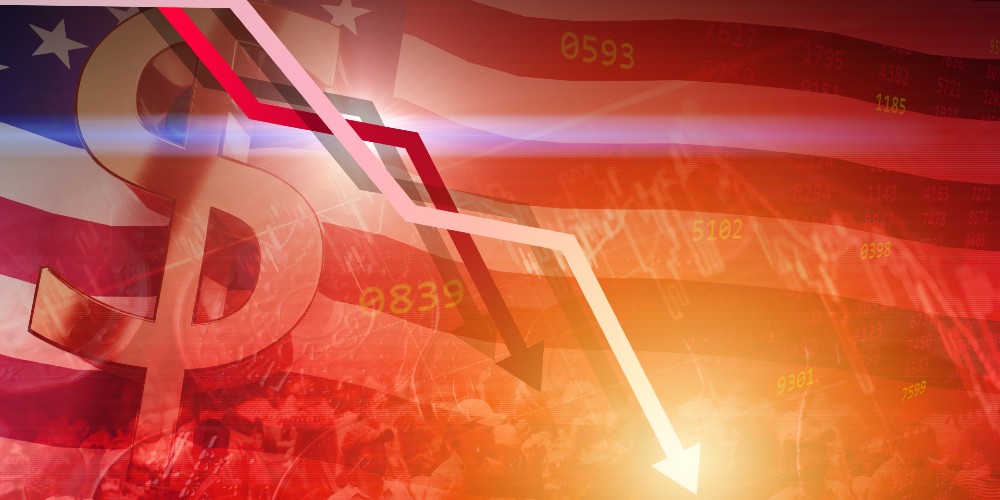(The Economic Collapse Blog)—One of the main reasons why Americans are in such a foul mood right now is because the economy is in really bad shape and it just keeps getting worse. This is very good news for the Trump campaign, because most Americans don’t want things to remain the same. A desire for change is in the air, but our economy is unraveling so rapidly that it won’t be easy for anyone to turn things around. We have built up a tremendous amount of momentum in the wrong direction, and it appears that the months ahead are not going to be pleasant.
Just look at what is happening to home sales.
Last month, sales of previously existing homes fell to the lowest level that we have seen since October 2010.
Of course in October 2010 we were dealing with the aftermath of a global financial crisis.
Overall, we are on pace “for the worst year since 1995” for sales of previously existing homes…
Sales of existing homes in the U.S. are on track for the worst year since 1995—for the second year in a row.
Persistently high home prices and elevated mortgage rates are keeping potential home buyers on the sidelines. Sales of previously owned homes in the first nine months of the year were lower than the same period last year, the National Association of Realtors said Wednesday.
Existing-home sales in September fell 1% from the prior month to a seasonally adjusted annual rate of 3.84 million, NAR said, the lowest monthly rate since October 2010.
Let those numbers sink in for a moment.
We haven’t seen anything like this for a long time, and nobody can deny that the market for residential real estate is in a depressed state right now.
And it appears that this month could be even worse than last month, because the number of mortgage applications being submitted is absolutely plummeting…
Mortgage applications decreased 17% from one week earlier as mortgage rates surged, according to data from the Mortgage Bankers Association’s (MBA) weekly application survey for the week ending October 11, 2024.
The Market Composite Index, a measure of mortgage loan application volume, decreased 17% on both a seasonally adjusted and an unadjusted basis from one week earlier.
Meanwhile, our nationwide commercial real estate crisis just continues to intensify.
If you can believe it, an office building in Manhattan that sold for 332 million dollars in 2006 just sold for 8.5 million dollars…
The sale of a nearly 1 million-square-foot Manhattan office building listed on the online auction site Ten-X was completed Tuesday for only $8.5 million.
That’s 97 percent less than the $332.5 million that the seller, Swiss bank UBS, paid for the Midtown property in 2006. The loss on the building at 135 West 50th Street was minimally offset by a $6 million gain UBS realized by buying and selling the ground beneath it in the interim.
UBS and its brokers at JLL listed the 920,000-square-foot building for sale on the online platform. The two-day auction kicked off July 30 with a starting bid of $7.5 million. The sale ended the next day after Ten-X lowered the reserve price. The winning bidder, whose identity has yet to hit property records, closed about 70 days later.
That is insane!
Commercial real estate prices have been crashing all over America, and this crisis is not getting the attention that it deserves from the media.
The banking industry is headed for big trouble as well. In fact, the government shut down another bank on Friday…
Friday, The First National Bank of Lindsay was closed by the Office of the Comptroller of the Currency (OCC), with the Federal Deposit Insurance Corporation (FDIC) appointed as receiver. The OCC acted after identifying false and deceptive bank records and other information suggesting fraud that revealed depletion of the bank’s capital. The OCC also found that the bank was in an unsafe or unsound condition to transact business and that the bank’s assets were less than its obligations to its creditors and others.
The OCC is referring the matter to the United States Department of Justice, which has a wide variety of tools to hold individuals accountable for criminal acts and focuses on victims in all of its matters.
Some experts are projecting that hundreds of more banks will soon fail.
If that actually happens, it will be a complete and utter nightmare.
The “restaurant apocalypse” that I have written about so much also continues to roll on.
Sadly, we just learned that Denny’s has decided to shut down 150 locations…
Denny’s is closing 150 restaurants over the next year, and the 71-year-old diner chain is mulling a major change to its 24/7 operating hours.
Fifty locations are set to close by the end of 2024, while the remaining 100 will shutter in 2025, Denny’s announced in an earnings call Tuesday. That amounts to a tenth of its restaurants, leaving 1,375 locations once completed. A specific list of closing restaurants weren’t immediately announced.
Needless to say, lots of other chains are slimming down as well.
Right now, thousands upon thousands of restaurants are being permanently closed from coast to coast.
If the economy was heading in the right direction, this would not be happening.
Speaking of closures, another major retailer has announced that it will be closing all stores…
Buybuy Baby is shuttering all of its stores roughly a year after new owners tried to revive the brand.
The company announced on its website that it is transitioning to an online-only model after recognizing the need for a “a strategic reset.”
“With this shift, we’ve come to the difficult decision of closing our physical stores by the end of this year,” the company wrote. “We understand this may be disappointing news, and we want all our customers to know this wasn’t a choice we took lightly.”
Most retailers that are experiencing difficulties will try to hang on until at least the end of December.
But once we get into 2025, expect a huge wave of new store closures.
As I discussed the other day, U.S. consumers are really hurting at the moment.
You can’t get blood out of a stone, and a staggering percentage of U.S. cardholders have already maxed out at least one credit card…
Nearly 2 in 5 cardholders (37%) have maxed out a credit card or come close since the Fed started raising interest rates, Bankrate’s Credit Utilization Survey found. That includes 20% who have maxed out a credit card and 17% who have come close to maxing one out.
This is what an imploding economy looks like.
Bubbles are bursting all around us, and the outlook for 2025 and beyond is absolutely horrible.
Our leaders kept the game going for a long time by injecting trillions of dollars into the system and by going into unprecedented amounts of debt.
But despite all of their efforts, the economy is coming apart at the seams anyway, and so I hope that you are prepared for a very hard landing.
Michael’s new book entitled “Why” is available in paperback and for the Kindle on Amazon.com, and you can subscribe to his Substack newsletter at michaeltsnyder.substack.com.




